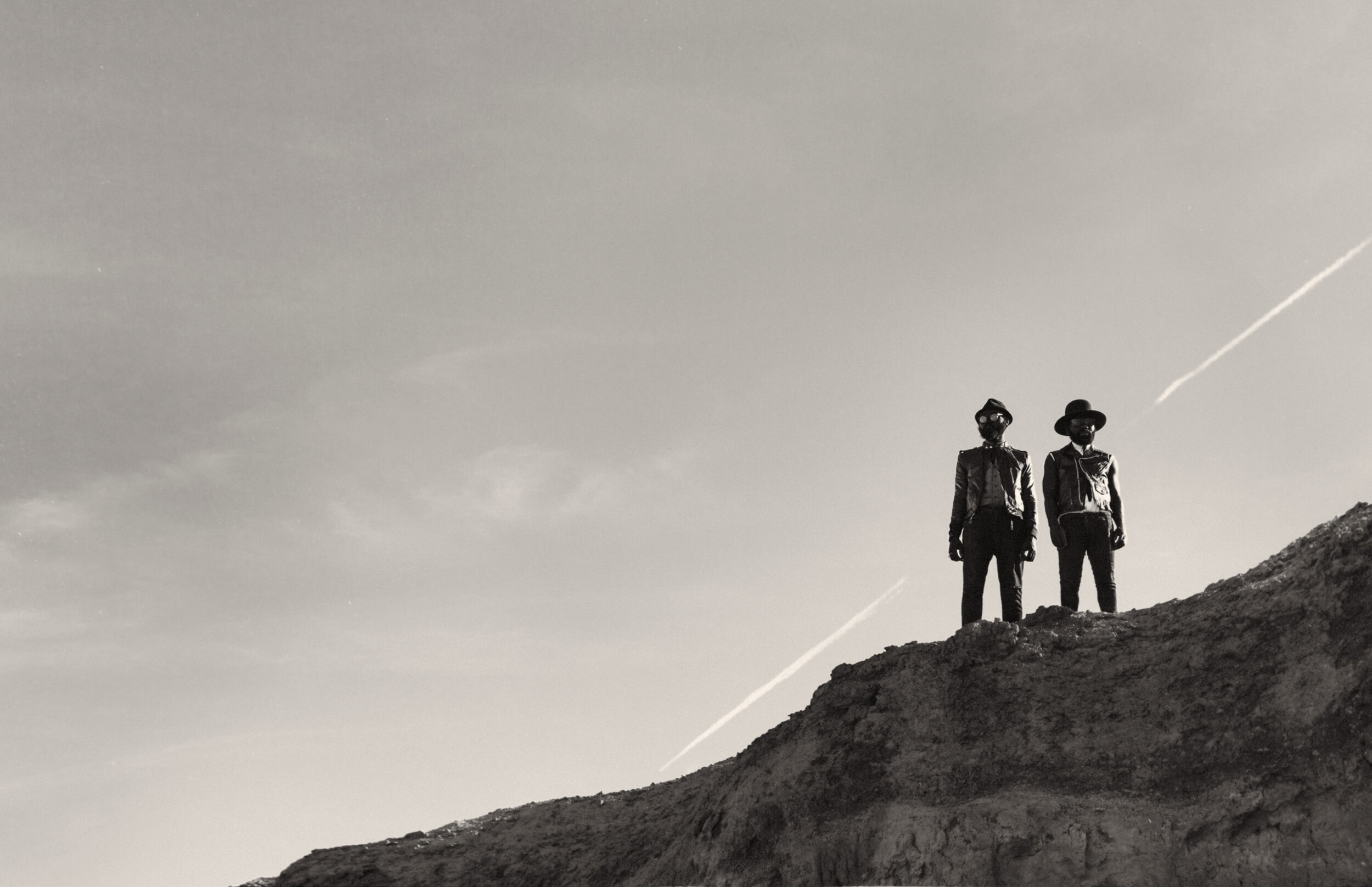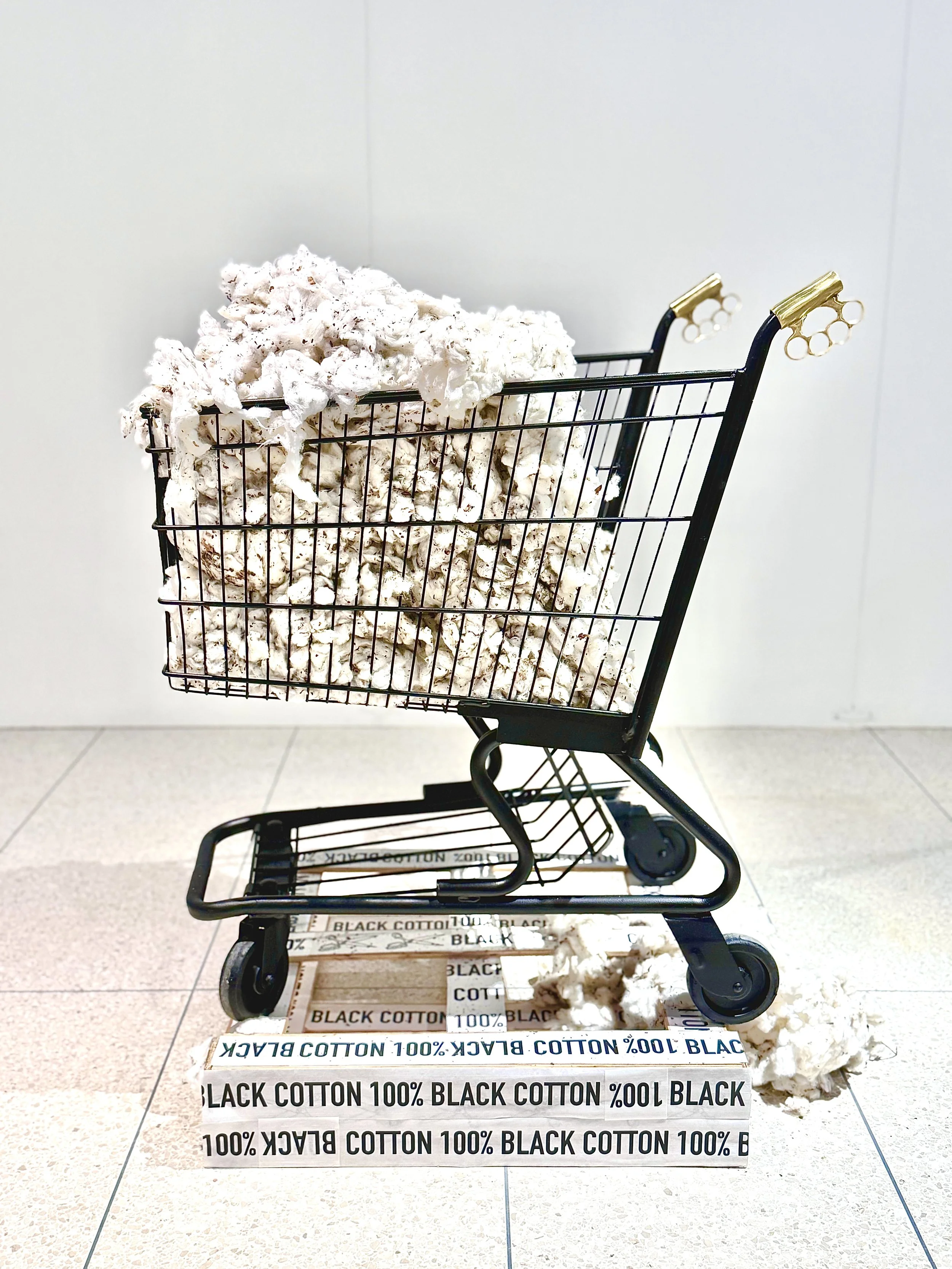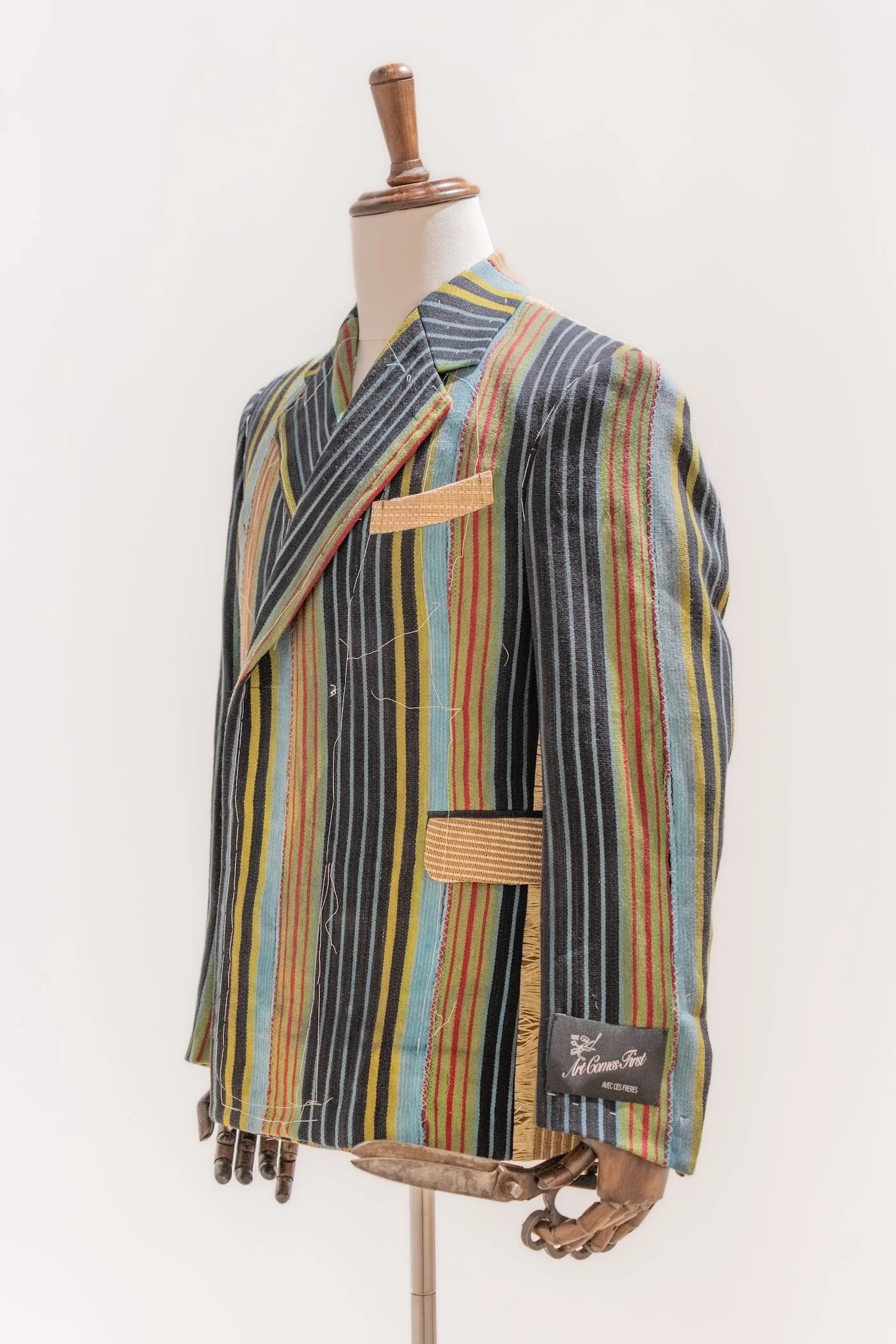
TEXTILE LANGUAGE
ART INSTALLATION
At 1-54 Contemporary AfricanArt Fair – New York
Textile Language by Art Comes First
Special Project | 1-54 Contemporary African Art Fair – New York, May 8–11, 2025
Booths 17 & 18 | 28 Liberty Street, New York
Art Comes First presents Textile Language, a two-room immersive installation that explores cloth as a vessel of memory, identity, and resistance. Through the symbolic power of cotton and the ancestral motif of the Afro comb, this project weaves together African textile traditions with modern narratives of craftsmanship and cultural reclamation.
Rooted in the theme of Black Cotton, the work journeys from the cotton cultivation of ancient Meroë and the indigo-dyed fabrics of Mali’s Tellem caves to a Black-owned cotton farm in Alabama, established in 1877. Textile Language honors these legacies through two contrasting yet connected rooms: together forming a call and response between past and future, material and meaning.
Booth 17: The Story of Textile Weaving
A Woven Memory
An immersive space that draws visitors into the tactile and sonic memory of African textile traditions. Here, the material isn’t just displayed; it speaks.
Installation Highlights
A central runway of raw cotton, sourced from the historic Bridgeforth Cotton Farm in Alabama, one of the oldest Black-owned cotton farms in the United States, stretches from the entrance to the far wall. This pathway forms a living thread, guiding visitors through a story that begins at the root: the land.
Positioned at the entrance, a vintage television sits low to the ground, looping THE BLUES — a visual poetry film shot in Ethiopia that explores the symbolism of the comb and cotton. Narrated through the voice and poetry of Saul Williams, the film offers a meditative rhythm — a sonic weave of grief, beauty, ancestry, and resilience.
Resting gently atop the television: a hand-forged brass comb hand crafted in Côte d’Ivoire. Both tool and totem, the comb was once used to process cotton before weaving. Here, it becomes a symbol of cultural identity, spiritual grooming, and the untangling of history.
Featuring poetry and vocals by Saul Williams.
Centerpiece Garment
At the center stands a one-of-a-kind tailored jacket, crafted from 100% Egyptian cotton, embroidered with raffia threads by artisans in Senegal, and tailored in Japan. The design features reimagined Afro comb motifs, integrating handcraft with global precision.
This piece represents the meeting point of precision tailoring and spiritual lineage, a garment that wears the past and gestures toward the future.
This room is a sensory dialogue, between silence and sound, material and message, roots and resistance..
Booth 18: Black Super Market
A Sculptural Reckoning
A stark, sculptural environment that reclaims the Black labor story through symbolism, critique, and the quiet weight of presence.
Installation Highlights
In the room’s center, a black shopping cart is elevated on a platform, filled with raw cotton. The cart is affixed with ACF’s brass knuckle handle, merging defiance and design. It is both contemporary consumer object and historic echo, linking the baskets of cotton pickers to modern commerce.
A veil of black cotton tape is wrapped around the plinth the cart is sitting on, marking a symbolic transition into the space, a soft yet unignorable threshold.
Facing the viewer, a row of mannequins, each draped with cotton picker’s bags boldly printed with BLACK COTTON, the straps slung deliberately over their heads. This confrontation transforms invisibility into visibility, burden into banner, labor into legacy.
While Booth 17 speaks of process and craft, Booth 18 addresses consequence and reclamation. If one room is the loom, this is the ledger — a place where labor is remembered, where fashion becomes witness, and where Black cotton becomes message and not just material.
📸 Shot by Orion King @nyframingco












